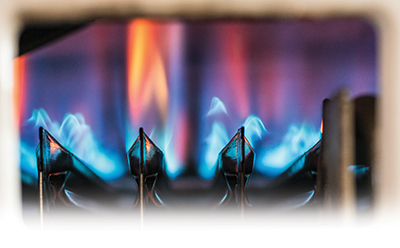This past August, National Comfort Institute (NCI) Vice President David Richardson and I had the privilege of speaking at the Carbon Monoxide Safety Summit, hosted by the NCOAA (National Carbon Monoxide Awareness Association).
Formed in 2015, this group’s mission is to raise awareness and provide information about Carbon Monoxide (CO), its dangers, and how to prevent needless poisonings.
Members and partners include manufacturers of CO safety equipment, firefighters, emergency responders, the National Fire Prevention Association (NFPA), Underwriter’s Labs (UL), and many other concerned parties.

Unfortunately, the HVAC contracting community is rarely represented. We must change this, and have broader representation by our industry in this organization. After all, we are in more homes than any other group!
Emergency Response
Besides raising consumer awareness, much of the conversation at the CO Summit was about emergency response. An important part of the discussions was low-level poisoning.
Emergency responders may never be called in when there are low levels of CO. Unfortunately, UL listed alarms only go off at very high levels. When someone calls emergency personnel, it’s typically due to life threatening poisonings or worse. Symptoms of low-level exposure often go unrecognized until long-term damage is done.
Chronic low-level exposure can result in a number of symptoms and diseases. From Sudden Infant Death Syndrome (SIDS), to multiple chemical sensitivity, to early Parkinson’s and Alzheimer’s, low level CO exposure can cause serious damage, especially to infants and the elderly.
Unfortunately, there is a misconception among emergency responders that ALL contractors know how to respond to and diagnose the cause of a CO problem. In reality, less than 10% of HVAC technicians and plumbers have the training or test instruments to test and diagnose these issues.
Training is the Answer
There are approximately 400,000 technicians in the field. Less than 20,000 have the most basic training and knowledge to test, diagnose, and address the sources of CO problems!
As I began preparing for my talk about an HVAC contractor’s role in CO response, I realized that well-trained HVAC professionals typically don’t wait until there is a catastrophic poisoning.
They investigate and diagnose both potential and current causes of CO in homes and buildings every day. It dawned on me that their role is, and should be one of a Pre-Responder — so that it never happens in the first place.
Thus, a new term, Pre-Responder is born, and presented for the first time at the 2025 CO Summit in Biloxi, Mississippi this fall.
What does a Pre-Responder do?
When your field people, including maintenance techs, service techs, installers, even salespeople, are in a home, they are the very first line of defense to help prevent CO poisoning.
There is one catch: to become a Pre-Responder you need the training, certifications, and tools to fully identify potential causes of CO in a building before they ever happen.
November is National CO Awareness Month. If you haven’t done it yet, now is the perfect time to get the training and tools to make your field people CO Pre-Responders.
This fall make sure that when your techs are in homes and buildings they can help prevent occupants from getting sick, and likely save lives.
Be part of the solution by becoming a Pre-Responder today!













Recent Comments